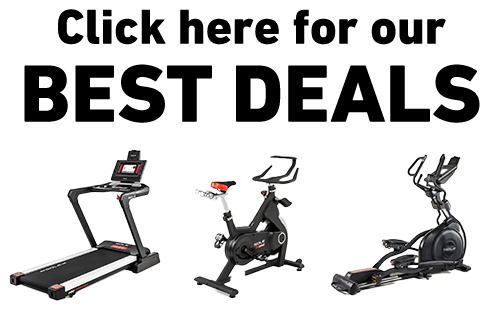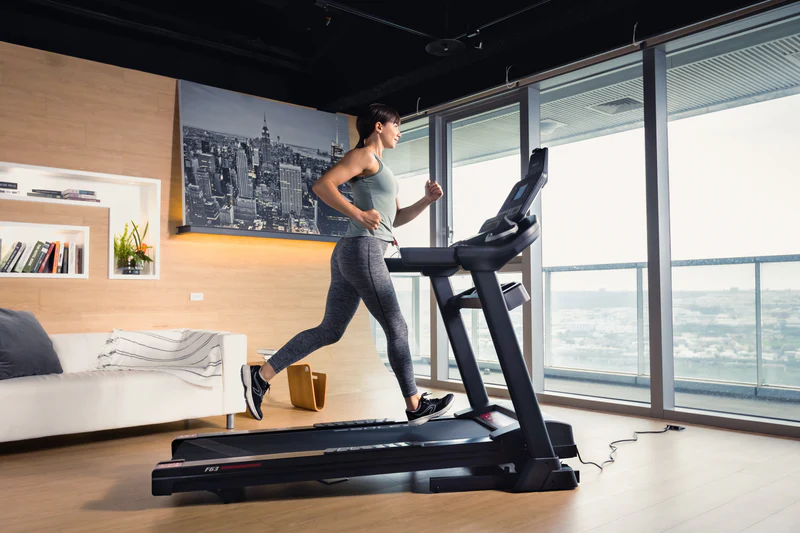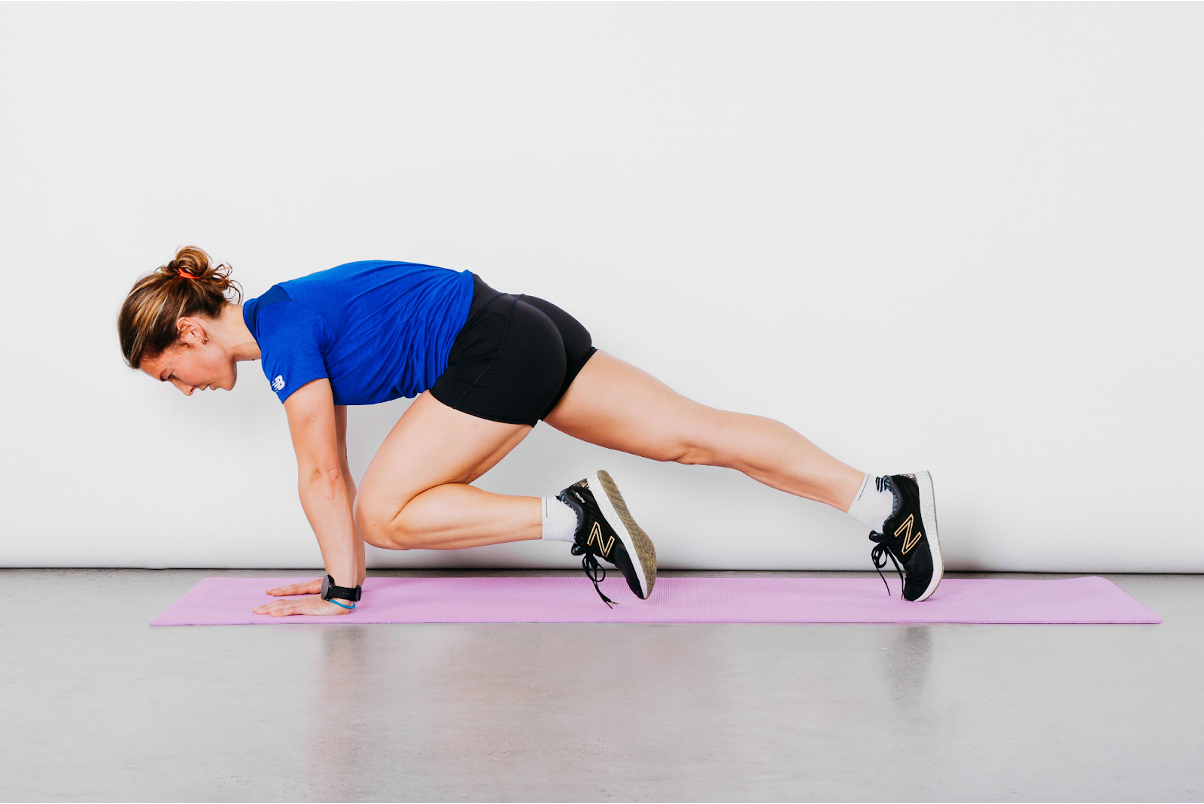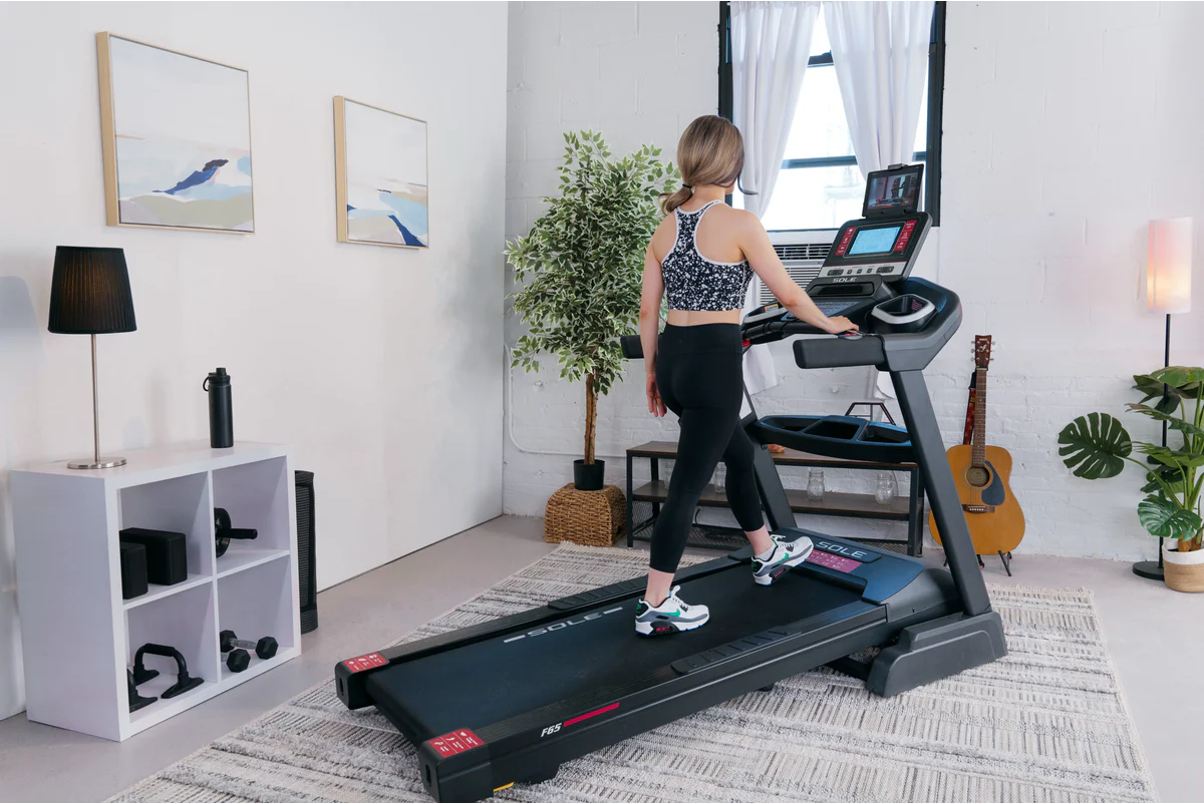Key Takeaways
- Walking pads are significantly more compact and portable than treadmills, ideal for small spaces.
- Traditional treadmills offer higher speeds, incline options, and robust construction for serious runners.
- Both provide effective calorie-burning benefits aligned with specific fitness goals.
- SOLE's foldable treadmills like the F63 and F80 bridge the gap between space-saving walking pads and full-featured treadmills, offering apartment-friendly storage with commercial-grade performance.
The Ultimate Space-Saving Battle: Walking Pad vs Treadmill
Choosing between a walking pad and treadmill isn't just about which one helps you exercise more. It's about finding what fits your space, lifestyle, and fitness goals. Both let you walk or run indoors but that's pretty much where their similarities stop.
Walking pads are made for people who need to save space but still want to stay active. They strip away all the extras to focus on one thing: letting you walk in a compact package that disappears when you're done.
Traditional treadmills have been around forever. They come with strong motors, sturdy frames, and lots of features like incline adjustments, workout programs, and heart rate monitors. They're built to handle everything from easy walking to marathon training.
So, which one should you choose?
|
At SOLE, we're proud to offer top-quality exercise equipment designed for home and gym use. Our machines are built to meet the highest standards of durability and performance, making them ideal for fitness enthusiasts at any level. SOLE Products
|
What Makes Walking Pads Different From Traditional Treadmills
Walking pads are designed to blend into your existing routine rather than demanding specific workout time and space.
Size & Portability Advantages
The biggest difference is how much room they take up. Traditional treadmills measure about 64–80 inches long and 28–36 inches wide when you're using them. That's a huge chunk of space in any room. Walking pads run about 40–55 inches long and just 20–24 inches wide. That's roughly half the size.
This compact design means you can slide walking pads under couches, beds, or into closets when you're done. Many weigh under 50 pounds and have built-in wheels, so you can easily move them between rooms or hide them away.
Weight & Storage Solutions
The weight difference is huge. Standard treadmills weigh between 200–300 pounds, helping them stay stable but might affect portability. Walking pads weigh between 25–65 pounds, so most adults can lift and move them as needed. Premium ones can go up to 100 pounds.
Storage is totally different too. Most walking pads stand upright in a closet or slide under furniture. Many are less than 5 inches thick when flat. While most treadmills fold up, they still need dedicated storage space and might be heavy to move around. Fortunately, a lot of these treadmills come with folding mechanisms (e.g., kick release, release lever)
Motor Power & Speed Limitations
Walking pads have motors in the 1.0–2.5 HP range. That's perfect for walking but not enough for running. Most max out at 3.5–4.0 mph, which is a brisk walk but not a jog. This limit is on purpose since they're designed for steady, low-impact movement rather than intense training.
Traditional treadmills pack motors from 2.5–4.0 HP for home models, with commercial units going even higher. These powerful motors handle speeds up to 12 mph or more, easily supporting everything from casual walking to sprint intervals. The big power difference makes treadmills the clear winner if you want to run.
Noise Level Comparison
Here's another big difference: how loud they are. Walking pads run at about 40–50 decibels at normal walking speeds. That's like a quiet conversation. This makes them apartment-friendly and lets you watch TV, take video calls, or work without annoying background noise.
Traditional treadmills operate at 60–70 decibels during use. That's as loud as a vacuum cleaner. The extra noise comes from bigger motors, larger belts, and the harder impact of running. If you share walls with neighbors or have people living below you, this difference really matters.
5 Key Benefits of Walking Pads for Modern Lifestyles
Walking pads have gotten popular because they solve common problems that keep people from exercising regularly.
1. Perfect for Home Office Integration
The slim profile and quiet operation make walking pads perfect partners for standing desks. Many people walk 2–3 miles during video meetings or while answering emails. This kills the "I don't have time to exercise" excuse by turning sedentary work hours into active time.
Walking at 1–2 mph is perfect for staying focused on work while keeping your muscles and circulation going. Many users say this slow, steady movement actually helps them concentrate better and avoids that afternoon energy crash from sitting all day.
2. Compact Storage in Small Apartments
For apartment dwellers, being able to completely hide exercise equipment is priceless. Walking pads slide under beds, into closets, or behind doors when not in use. Most weigh under 50 pounds and have wheels, making them easy to move around.
This "out of sight, out of mind" feature means your living space doesn't have to look like a gym. You can keep a nice, clean home while still having easy access to daily cardio. For many city dwellers with limited space, this alone makes walking pads worth it over treadmills.
3. Lower Impact on Downstairs Neighbors
The combination of lighter weight, gentler walking impact, and quieter motors makes walking pads way more neighbor-friendly than treadmills. Many models include extra shock absorption specifically to minimize vibration through floors.
This matters a lot in apartments or condos with shared walls and floors. Less impact means fewer complaints from neighbors and lets you exercise any time without worrying. Some users even put thin anti-vibration mats under their walking pads for extra sound dampening.
4. Budget-Friendly Entry Point for Fitness
Walking pads cost less than full-featured treadmills, making them more accessible for beginners or people on tight budgets. Entry-level walking pads start at $300–400, while decent treadmills start at $600–700. This lower price makes it easier to start a home exercise routine.
The simpler mechanics and fewer electronic parts also mean lower maintenance costs over time. With fewer things that can break or wear out, walking pads often give better long-term value for casual users who don't need fancy features.
5. Simplified Features for Beginners
Many walking pads have streamlined controls with just power, start/stop, and speed adjustments. This simplicity removes the intimidation factor that complex treadmill consoles might create for exercise newcomers. Some models work entirely from smartphone apps, giving tech-savvy users a familiar interface.
Focusing on walking rather than running also makes these machines less scary for seniors, rehab patients, or anyone new to fitness. The emphasis on steady, sustainable movement rather than high-intensity performance creates a more welcoming way to start exercising regularly.
When Traditional Treadmills Win the Race
While walking pads shine in certain situations, traditional treadmills still win for serious fitness enthusiasts. Their solid construction and advanced features make them superior for anyone focused on athletic performance or intense training.
Higher Speed Capabilities for Runners
The most obvious treadmill advantage is speed range. Most quality home treadmills reach 10–12 mph, handling everything from easy jogging to sprint intervals. This versatility lets you do various workout types, from heart rate zone training to HIIT sessions.
The stronger motors in treadmills maintain consistent performance even at high speeds or with heavier users. This reliability matters for anyone training for races or following specific running programs that need precise pace control.
Sturdier Construction for Intense Workouts
Traditional treadmills have wider running surfaces (20–22 inches versus 16–18 inches on walking pads) and stronger frames designed to handle running impact. This extra stability matters during intense workouts when you might get tired and your form gets sloppy.
The heavier construction creates a more secure platform that won't wobble or shift during use. For runners, especially those over 200 pounds or tall individuals, this stability means safer workouts with less injury risk. Many premium treadmills also have enhanced shock absorption that reduces joint impact during running, something rarely found in walking pads.
Advanced Features & Training Programs
Traditional treadmills offer sophisticated console systems with pre-programmed workouts, fitness tests, and custom programming. These guided experiences can really improve workout variety and effectiveness, especially for users who like structured training plans.
Many models include heart rate monitoring through handlebar sensors or wireless chest straps. This lets you control intensity precisely and estimate calorie burn more accurately. Extras like cooling fans, tablet holders, Bluetooth speakers, and large screens improve the overall experience, helping you stay engaged during longer workouts.
Incline Options for Challenging Workouts
The biggest functional advantage of treadmills is incline capability. Most quality models offer 0–12% inclines, with premium versions reaching 15% or higher. Some even provide decline options to simulate downhill running.
These elevation changes dramatically increase workout intensity and calorie burn without needing faster speeds. Walking at 3 mph on a 10% incline burns way more calories than walking the same speed on flat ground. Incline also lets you target different muscles, especially working your glutes and hamstrings harder.
Price Comparison: What You Get at Different Budget Levels
Entry-Level (Under $500)
Entry-level walking pads ($300–500) offer speeds up to 3.8 mph, basic LED displays showing time, distance and speed, and support around 220–240 pounds. Most include remote controls and run quietly with 1.5–2.0 HP motors.
Entry-level treadmills at this price give you speeds up to 8 mph, limited 3–5% incline options, and very basic programming. Build quality is noticeably lighter than expensive models, with narrower belts (16–18 inches) and shorter warranties. These budget treadmills work fine for casual walkers but rarely satisfy serious runners.
Mid-Range ($500–$1000)
Mid-range walking pads ($500–1000) feature better motors (2.0–2.5 HP), stronger construction supporting up to 300 pounds, and enhanced cushioning. Many include smartphone apps, more detailed tracking, and quieter operation with improved belt materials.
For treadmills, this price range is a big quality jump. Expect speeds up to 10 mph, 10% incline capability, wider belts (18–20 inches), and more console features including multiple workout programs. Motors in the 2.5–3.0 HP range provide reliable performance for most recreational runners, though heavy daily use might still cause issues over time.
Premium ($1000+)
Premium walking pads ($1000+) often add safety features, advanced shock absorption, higher weight capacities (up to 350 pounds), and sophisticated app connectivity including virtual coaching and detailed performance tracking.
Premium treadmills ($1000–3000+) represent a huge quality leap with commercial-grade parts, 3.0-4.0 HP motors, enhanced cushioning, and advanced entertainment options. Many include large HD touchscreens with interactive programming, automatic incline adjustment, and extended warranties. These machines handle daily intense use by multiple family members while staying consistent.
Walking Pad vs Treadmill Comparison Table
|
Feature |
Walking Pads |
Traditional Treadmills |
|
Dimensions |
40–55" long × 20–24" wide |
64–80" long × 28–36" wide |
|
Weight |
25–65 lbs (premium ones can be 100 lbs) |
200–300 lbs |
|
Storage |
Slides under furniture, stands in closet (4–5" thick when folded) |
Requires space, some fold but still bulky |
|
Motor Power |
1.0–2.5 HP |
2.5–4.0 HP (home models) |
|
Speed Range |
Up to 3.5–4.0 mph (walking only) |
Up to 10–12 mph (walking, jogging, running) |
|
Noise Level |
40–50 decibels (quiet conversation) |
60–70 decibels (vacuum cleaner) |
|
Running Surface Width |
16–18 inches |
20–22 inches |
|
Incline Capability |
None |
0–12% (up to 15% and decline options on premium models) |
|
Weight Capacity |
220–350 lbs (varies by model) |
300–400 lbs |
|
Portability |
Highly portable with wheels |
Fixed location, difficult to move |
|
Price Range |
|
|
|
Electricity Usage |
300–500 watts (~$1–2/month) |
750–1500 watts (~$3–5/month) |
|
Best For |
|
|
|
Key Features |
|
|
|
Apartment-Friendly |
✅ Yes (low noise, minimal vibration) |
✅ Yes (SOLE treadmills have Cushion Flex Whisper Deck technology) |
|
Running Support |
❌ No (walking only) |
✅ Yes (full speed range) |
|
Maintenance |
Lower (simpler mechanics) |
Higher (more complex parts) |
Upgrade Your Home Cardio Experience With SOLE Treadmills
While walking pads work great for apartment dwellers who just need basic walking, you deserve equipment that grows with your fitness journey. SOLE's treadmill lineup gives you the best of both worlds.
SOLE treadmill models like the F63 and F80 fold up when you're done (solving that space issue) while still delivering the power and features serious fitness requires.
What sets SOLE apart from those basic walking pads? You're getting the Cushion Flex Whisper Deck that reduces impact by 40%. This is way better for your joints than any walking pad's thin belt. This feature also means that it’s quiet—so you won't wake up your whole household during early morning workouts.
Plus, with speeds up to 12 mph, incline options up to 15%, and decline options on some models like the F85, you can progress from walking to running without buying new equipment.
You also get the SOLE+ app completely free with your treadmill. No monthly fees like those walking pad apps that nickel and dime you. You'll have access to hundreds of guided workouts that actually use your treadmill's features, not just basic walking routines.
Whether you're recovering from an injury with gentle walks or training for your first 5K, SOLE's treadmills adapt to your needs.
Check out the complete SOLE treadmill collection today!
Frequently Asked Questions (FAQ)
Can walking pads support running or jogging?
Most walking pads aren't made for running or jogging. Their motors (1.0–2.5 HP) and belt designs work for walking speeds up to 3.5–4.0 mph.
Trying to run on these machines can damage the motor and create safety hazards from the narrower belt and lighter frame. If you want to run, even occasionally, a traditional treadmill is the safer choice.
How much electricity do walking pads use compared to treadmills?
Walking pads use way less electricity than treadmills because of smaller motors and lighter demands. Most walking pads use 300–500 watts during operation, while standard treadmills use 750–1500 watts.
Using a walking pad one hour daily costs about $1–2 in electricity per month. A treadmill might cost $3–5 monthly with similar use.
Are walking pads suitable for elderly users?
Walking pads can be excellent for many seniors focused on maintaining mobility and health. Their lower speeds actually represent a safety advantage for elderly users who mainly want gentle walking. Many models have low step-up heights (4–5 inches) making them accessible for those with limited mobility.
However, the narrower belt and limited handrails might challenge seniors with balance concerns. Some elderly users might do better with traditional treadmills that have full-length handrails, especially those recovering from injuries or managing balance conditions. Always check with healthcare providers before starting new exercise programs.
Can I fold and store my walking pad under my bed?
Most walking pads are made for under-bed storage, with profiles as thin as 4–5 inches when flat. Before buying, measure your under-bed clearance and compare it to the folded dimensions.
Consider the weight (25–65 pounds) and whether you'll need help moving it. Many users successfully store walking pads under beds, in closets, or behind furniture.
Can SOLE treadmills work for apartment living like walking pads do?
SOLE treadmills can absolutely work in apartments, especially models like the TT8, F63, F89, and F80.
Here's why: that Cushion Flex Whisper Deck technology isn't just marketing fluff. It actually reduces noise and vibration way better than standard treadmills, making them surprisingly neighbor-friendly. Plus, most SOLE models fold up to about half their size when you're done.




Leave a comment
This site is protected by hCaptcha and the hCaptcha Privacy Policy and Terms of Service apply.